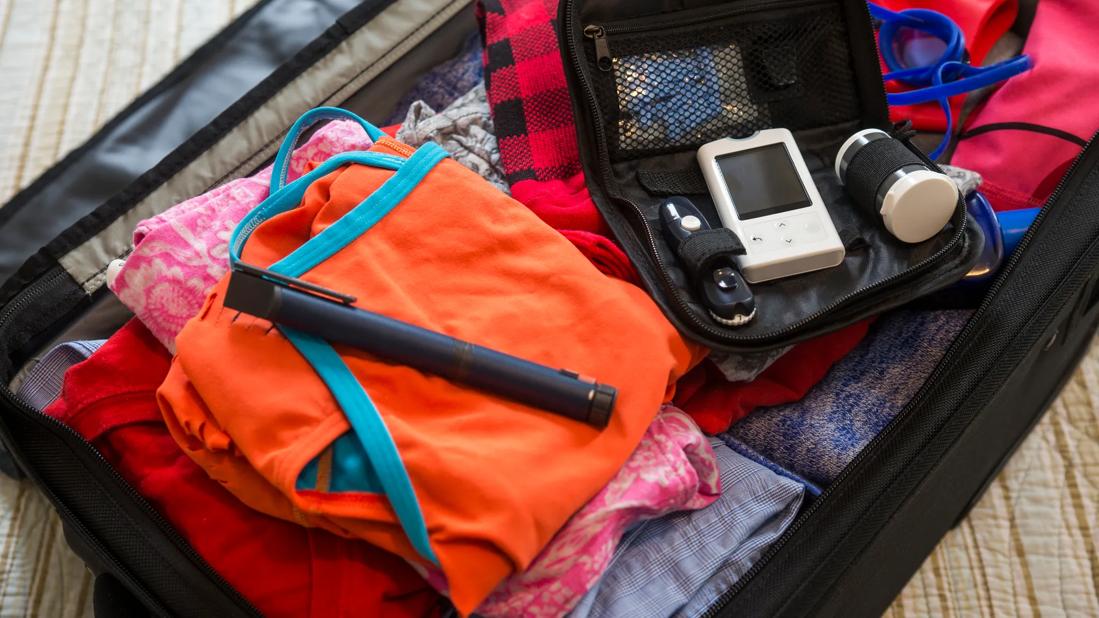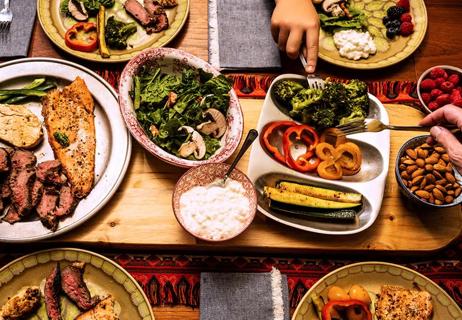Pack extra medication and supplies, bring healthy snacks and set reminders

If you’re traveling with Type 2 diabetes, there are some extra considerations you need to take in addition to booking a flight, packing your bags and planning your itinerary. Make sure you have enough medication and supplies for the duration of your trip, pack healthy snacks to eat while traveling and stay hydrated.
Advertisement
Cleveland Clinic is a non-profit academic medical center. Advertising on our site helps support our mission. We do not endorse non-Cleveland Clinic products or services. Policy
Registered dietitian and diabetes educator Emma Rueth, RD, LD, CDCES, offers the following advice for how to prepare for travel with Type 2 diabetes.
In addition to packing enough medication and supplies you need to manage your Type 2 diabetes for your entire trip, it’s a good idea to pack extra in case of travel delays. This may include:
“If you take a medication that puts you at risk for low blood sugar (hypoglycemia), consider bringing glucose tablets,” says Rueth. “Treat blood sugar under 70 mg/dL with 15 grams of carbohydrates, like four glucose tablets or 4 ounces of juice or regular soda.”
And it’s best to pack your medication and supplies in your carry-on luggage if you’re traveling by plane. (An important note: People with diabetes don’t have to follow the TSA’s 3.4-ounce liquid rule.)
It can also be helpful to wear a medical ID bracelet when traveling with Type 2 diabetes. They typically contain vital information on your medical condition, medications and any allergies. Wearing one can offer you peace of mind in the event of an emergency.
Advertisement
You may also want to carry a letter from your healthcare provider that outlines your medical condition and any medications you take. Or you can print and carry a TSA Disability Notification Card.
And if you’re flying, you can alert TSA workers if you’re wearing an insulin pump or CGM before you go through security.
It’s especially important to prepare and pack snacks when traveling with Type 2 diabetes.
Consider options — like carrots and hummus — that you can reach for when you feel hungry. If you’re having a meal on the road or at the airport, look for food court options such as fresh fruit, nuts or a salad with grilled chicken.
And you can enjoy the local cuisine when you reach your destination. Rueth adds that it’s important to keep track of your blood sugar so you can make any necessary adjustments.
Make sure you stay hydrated as you travel, particularly in hotter environments.
“You can become dehydrated more easily if your blood sugar is uncontrolled,” stresses Rueth.
Think about bringing a reusable water bottle along for your journey and make a priority to drink water during long flights, as well as before, during and after activities.
Opt to wear clothing and shoes that are breathable and comfortable — especially if you’re on a long flight or road trip. Rueth says you may also want to avoid wearing open-toed shoes if your hemoglobin A1C is above 7%.
“If you get a cut, the risk of an infection is higher,” she warns. “Type 2 diabetes may affect your body’s ability to heal.”
Traveling — especially to a different time zone — can cause jet lag and throw you off your schedule.
Use your phone to set an alarm or reminder for when you need to take your medication or test your blood sugar levels.
“Don’t let Type 2 diabetes stop you from traveling,” Rueth encourages.
With a little planning, you can have fun and stay healthy. If you have any questions about managing your Type 2 diabetes while traveling, don’t hesitate to talk to your healthcare provider.
Advertisement
Learn more about our editorial process.
Advertisement

Opt for foods that have a mix of protein, fiber and healthy fats

Use the ‘plate method’ to create a meal with non-starchy vegetables, lean proteins and carbs

Type 1 diabetes happens when your body doesn’t make insulin, while Type 2 happens when your body can’t use insulin properly

Keto can reduce blood sugar, but that doesn’t mean it’s right for everyone

Making a health plan with your doctor before you leave will make it easier to sit back and enjoy your flight

Taking a smaller dose than what your doctor recommends isn’t a good idea

Hot, humid weather can affect your blood sugar levels and even cause dehydration or heat stroke

One is a supplement, the other is a prescription medication — both may be useful in managing Type 2 diabetes, but one has more research

Babies can get congested easily, but you can calm their cough by keeping them hydrated, using nasal drops and running a humidifier

Weight loss may cause loose, sagging skin and muscle loss to your rear

Several conditions, like vitiligo and fungal infection, can cause a loss of pigmentation, leading to white spots or patches on your skin